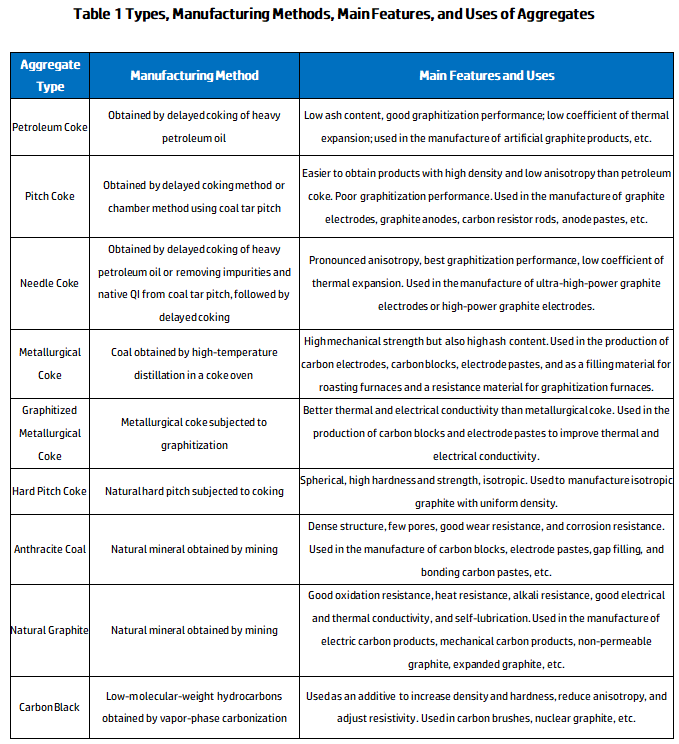【Carbon Science】 Carbon Production Raw Materials and Applications

【Carbon Science】 Carbon Production Raw Materials and Applications
Ⅰ. Carbon Production Raw Materials
I. Raw Materials for Carbon Production
The raw materials for producing carbon and graphite materials are carbonaceous materials. Due to differences in source and production processes, there are significant variations in their chemical structure, morphological characteristics, and physicochemical properties. Based on their physical state, they can be classified into solid raw materials (i.e., aggregates) and liquid raw materials (i.e., binders and impregnants). Among them, solid raw materials can be further classified into multi-ash raw materials and low-ash raw materials based on the content of inorganic impurities. The ash content of low-ash raw materials is generally less than 1%, such as petroleum coke and pitch coke. The ash content of multi-ash raw materials is typically around 10%, such as metallurgical coke and anthracite coal. In addition, recycled materials like graphite fines can also serve as solid raw materials. Due to the different roles and scopes of use for various raw materials, they have different quality requirements. Auxiliary materials such as quartz sand are also used in carbon production.
Ⅱ. Solid Raw Materials (Aggregates)
The types, manufacturing methods, main features, and uses of aggregates are summarized in Table 1.

Ⅲ. Applications of Carbon
Carbon products are classified into graphite electrode class, carbon block class, graphite anode class, carbon electrode class, paste class, electric carbon class, etc. Commonly known as carbon bricks or electric furnace blocks, they are mainly used in the metallurgical industry for the smelting of non-ferrous and ferrous metals, as well as in the carbide and phosphorus chemical industries. Carbon blocks can be classified into blast furnace carbon blocks, aluminum cell carbon blocks, and electric furnace blocks based on their applications. Carbon products can be categorized into carbon products, graphite products, carbon fibers, and graphite fibers based on the depth of processing. Depending on the raw materials and production processes, they can be classified into graphite products, carbon products, carbon fiber, special graphite products, etc. Based on the size of the ash content, carbon products can be classified into multi-ash products and low-ash products. In China, the national technical standards for carbon products and the technical standards issued by departments are classified according to the different uses of products and different production processes. This classification method essentially reflects the different purposes of products and different production processes, facilitating accounting. Therefore, this classification standard is also adopted for calculation. Additionally, in terms of the quality of carbon products, carbon products from Ningxia have a significant advantage in raw materials as they use TaiXi smokeless coal. The carbon products produced with multi-ash raw materials in Ningxia rank among the best in China. Welcome to contact us for more related reports.
No related results found








0 Replies